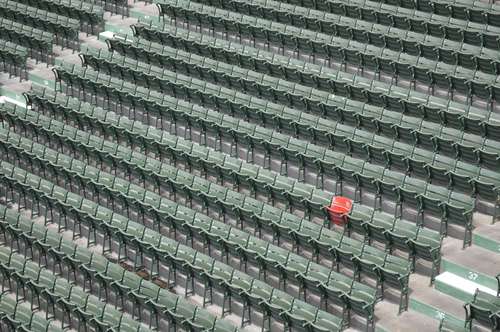As the chasm between global supply and demand widens, the effect is greatly felt in the real estate market. As a matter of fact, the US is currently facing a rapid decline in the availability of homes.
This new unimpressive record is an aftermath of a stretched pandemic period that heavily bore down on the labor supply. Labor shortage effectively distributed the curve in the construction of single-family homes in America. Within a period of nine years, from January 12 to June 2021, the US Census recorded the formation of 12.3 million households in America. However, only about 7 million new family structures were erected.
It is, therefore, no news that the US is short of homes for its inhabitants. Recent research from Realtor places the number of households lacking their own homes to be around 5.24 million. A huge leap of 1.4 million from 3.84 million was recorded in 2019.
Before we delve into understanding the more intriguing aspects of the US housing deficit, it's imperative to understand what household formation implies.
According to the U.S Census Bureau, a household is defined as all the people who occupy a single housing unit, regardless of their relationship. A new household is formed when an individual exits a shared accommodation. This includes all living spaces inhabited by related or non-related persons like houses, apartments, or single rooms. It is important to note that the Census does not consider living quarters, such as dorms, to be households.
Households can either be occupied by an owner or rented.
By 2021, there were over 129 million households in the U.S, an increase of over 76 million from the records of 1960.
As expected, this new trend has negatively impacted the prices of houses in the U.S, even beyond coastal areas like San Francisco and New York.

Mike Kingsella, CEO of Up For Growth, a company that focuses on addressing the housing shortage, had said, "Where we are seeing underproduction, we're seeing homeownership fall further and further out of reach."
Although the numbers of household formations currently are slower than in the pre-pandemic period, homebuilders would have to speed up their pace to double their current home production rate to close the gap in about six years.
"The pandemic has certainly exacerbated the U.S. housing shortage, but data shows household formations outpaced new construction long before Covid. Put simply; new construction supply hasn't been meeting demand over the last five years," Realtor guru Danielle Hale had said.
What does the housing shortage mean for households?
Like all other instances when demand outpaces supply, value is bound to spike.
The US homeownership is soaring, with the median home sales price reaching a record $416,000 in June.
"Clearly, affordability is at a crisis point for millions of Americans across the country," Up For Growth's CEO, Mike Kingsella, has said.
Up For Growth unveiled in its analysis of Census data that over 83 cities with sufficient housing in 2012 currently suffer a massive undersupply of household accommodations. This includes cities in the Phoenix-Mesa-Chandler region and even smaller cities like Oregon, California, Bend, and Merced.
The recent hikes in interest rates are by no means helping matters.
The current undersupply of US homes is likely to be aggravated by the spike in interest rates as it will be more expensive to buy homes or build them. Kingsella said. "It's hard to imagine that we would see this get better."
PulteGroup, one of the largest homebuilders, relaxed its 2021 Q3 expectations for home closing due to supply chain disruptions.
CEO Ryan Marshall stated in a press release, "Despite the extraordinary efforts of our trade partners, the supply chain issues that have plagued the industry throughout the pandemic have increased during the second half of the year."
We continue to work closely with our suppliers. Still, shortages for various building products, combined with increased production volumes across the home building industry, are directly impacting our ability to get homes closed to our level of quality over the remainder of 2021."
The deficiency of housing in the United States has sharply forced down the dreams of many young Americans who had hoped to own their own homes. The lack of housing has spread from being only a blue coast issue to a national trauma.
“It’s like the cancer was limited to certain parts of our economic body,” said Sam Khater, the chief economist at Freddie Mac. “And now it’s spreading.”
Well, but what about lands?
The United States is running short of land as well. A new report from the Wall Street Journal has revealed the scarcity of land in the Sunbelt.
Using the case study of Mr. Thomas's family, who owns about 11,000 acres of ranchland northeast of Tampa, Fla. According to the reports, their grandfather accumulated much of the farmland in 1932 with just 10 cents an acre.
Today, the population in the Tampa metropolitan area has boomed to over 3 million people, and extensive communities of single-family homes now surround the Thomas family home.
Desperate land buyers had besieged Mr. Thomas and his family to buy some of their lands in 2021. The family sold part of its lands to a developer last year, amounting to $70 million or about $20,000 per acre.

Interestingly, more offers are coming from developers to buy up some remaining areas of their land for twice the price last year.
Mr. Thomas had said that Tampa-area land prices are “booming right now like nothing I’ve ever seen."
“And I’ve been in charge here for 44 years.”
Land in the US is becoming a rare resource. Due to land use restrictions and lack of investment in public infrastructures such as roads and rails, developers are finding it difficult to get land near populated areas to erect homes.
However, the Federal Reserve is trying to combat inflation which might bring down the prices for lands that have sprung up in the past. But for now, as the current surge of strength in demand is relatively higher than supply, investors and economists fear the rise will continue in the long run.




